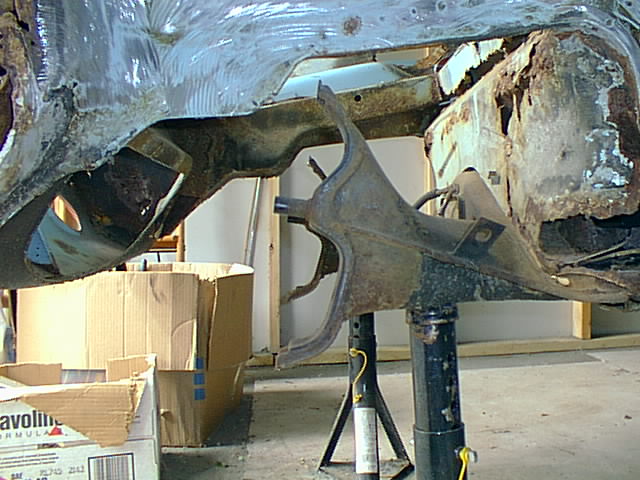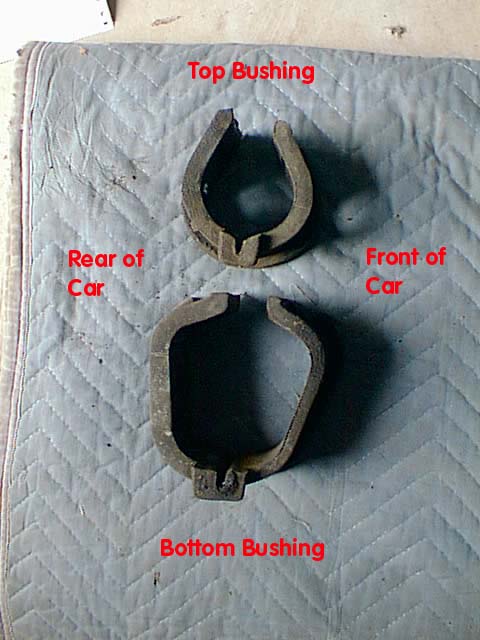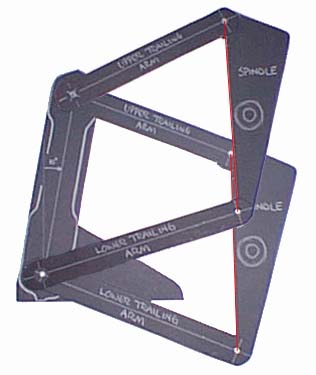Type
3 Lowering...
or "Getting it in the Weeds"
There is always a debate around lowering
a T3 VW. Proponents say it doesn't negatively affect handling and
ride. Opponents say it has to since it changes the suspension geometry
and reduces the travel. Proponents claim lower CG, thus better handling.
Opponents point to reduced or negative caster angles and bump steer.
This debate is as polarizing as the carbs vs. FI debate, maybe more so.
So what is the "truth". As an engineer,
I figured I could apply a little science to the problem and figure it all
out. It has not been that easy and I still don't have the answer.
I suspect that the effects of lowering on the suspension are confounded
with each other, thus adding to the different results for different people.
Of course, people's individual expectations and preferences will also add
to the confusion. I also suspect some error in my measurements.
But, I thought I would share what I have learned and look for some feedback.
BTW, if you have come here looking for
a "HOW TO" article on lowering, I am sorry but you won't find it.
The Bentley Manual has the procedure well documented on Chapter 8, Section
4. Check it out.
What
VW did...
| FRONT BEAM FRAME
MOUNT
This is a shot of the front beam mount
on my Fasty. As you can see VW built in a degree of rearward tilt
of the top of the beam. This rearward tilt is CASTER. It is
necessary for a car to have a certain amount of caster in order to track
down the road correctly. The caster angle is what causes the wheels
to return to center when you release the steering wheel after a turn.
It is essentially the same as on the shopping cart in your grocery store.
The caster is pretty much built in here. It would not be easy or
cheap to adjust the caster during development of the front suspension.
VW needed a way to fine tune the caster angle to get the ride and handling
they desired. They did this with the rubber bushings that go between
the beam and the frame horn. See below. |
 |
| FRONT
BEAM BUSHINGS
These are the front beam bushings from
my Fasty. The important thing to notice here is that the bottom bushing
has different thicknesses of the front and rear faces. The front
face is thinner than the rear face. This effectively increases the
caster angle assembled into the front suspension. Check out the information
below for more details.
My guess is that VW started with uniform
thicknesses and then fine tuned the caster angle by changing the thickness
front to rear. In the end VW settled on a design and then manufactured
the bushings accordingly.
|
 |
| FRONT
SUSPENSION MODEL
This is the model of the front suspension
that I built after measuring my Fasty. The important thing to observe
here (and I admit that it is not very obvious in the picture) is the difference
in angle between the two red lines. As you can kind of see, the angle
changes the wrong way (from a caster standpoint) as the suspension travels
upward. That is, the top of the spindle tips forward more thus reducing
camber.
Now there are a few issues with this model
that I discuss in detail below, but the reduction in caster angle with
lowering is pretty obvious. |
 |
Here are the details of what I found out
when I measured my car's front suspension. Caution to non-engineering
type people...this gets a little geeky. <G>
I very carefully measured the angle of
the front beam mount on my Fasty and compensated for the pan not being
exactly level. I get a beam mounting caster of 9.1 degrees.
I then measured the rubber bushings. The upper bushing is uniform
thickness = 0.45 inches. The lower is assymmetric. The rear
thickness is 0.55 inches. The front thickness is 0.35 inches.
Figuring this in adds another 0.9 degrees to the caster of the beam for
a total of a nice round 10 degrees. Sounds like something VW would
pick, right?
Well, this is where the confusion comes
in. Bentley states that the caster at the wheel is 4 degrees.
I built a full scale, 2-D mock-up of the front suspension with the beam
at 10 degrees. The best caster angle that the suspension has as it
swings through it travel with the dimensions I previously measured on my
car is -0.5 degrees. Yes NEGATIVE. In order to get the 4 degrees
POSITIVE at the wheel the Bentley mentions the front beam angle would need
to be 16 degrees!!!
Now I am sure of two things VW did
not design in NEGATIVE caster and I did not miss the front beam angle measurement
by more than 50%. I am not sure what is going on, yet. My next
step is to remeasure everything and to put it all in a spreadsheet so that
I can do a mini sensitivity analysis to see if some combination of small
measurements errors could account for my results. I am also open
to any and all feedback, just e-mail
me.
The plot thickens. Stay tuned.
A
DARKSIDER opportunity....
So you have lowered your T3 and don't
like the resulting handling, especially the tendency to wander at speed
and in crosswinds. What can the DARKSIDER do? Right now, not
much but live with it. However there is an opportunity for some enterprising
DARKSIDER out there. Take VW's lead and redesign a set of front beam
bushings to increase the caster angle. You could change both the
top and bottom bushing front to rear thickness ratios and maybe get 1.5
to 2 degrees of caster increase. This would be a very welcome thing
among us DARKSIDERS. So who wants to step up to the plate?
I will help if possible.

|





